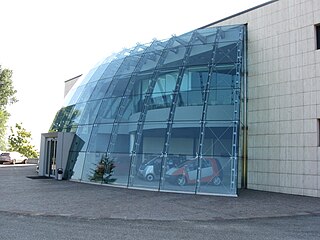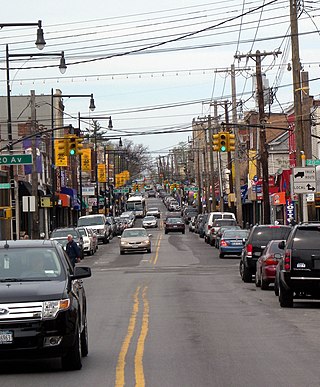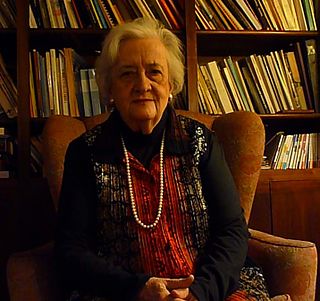
Sardinian or Sard is a Romance language spoken by the Sardinians on the Western Mediterranean island of Sardinia.

Kalamazoo is a city in and the county seat of Kalamazoo County, Michigan, United States. At the 2020 census, Kalamazoo had a population of 73,598. It is the principal city of the Kalamazoo–Portage metropolitan area in southwestern Michigan, which had a population of 261,670 in 2020.

World Wrestling Entertainment (WWE) is an American professional wrestling promotion. It is owned and operated by TKO Group Holdings, a majority-owned subsidiary of Endeavor Group Holdings. A global integrated media and entertainment company, WWE has also branched out into fields outside of wrestling, including film, football, and various other business ventures. The company is additionally involved in licensing its intellectual property to other companies to produce video games and action figures.

Rimini is a city in the Emilia-Romagna region of Northern Italy.

New Musical Express (NME) is a British music, film, gaming, and culture website and brand. Founded as a newspaper in 1952, with the publication being referred to as a "rock inkie", the NME would become a magazine that ended up as a free publication, before becoming an online brand which includes its website and radio stations.

Knott's Berry Farm is a 57-acre amusement park in Buena Park, California, United States, owned and operated by Six Flags. In March 2015, it was ranked as the twelfth-most-visited theme park in North America, while averaging approximately 4 million visitors per year. The park features over 40 rides, including roller coasters, family rides, dark rides, and water rides.

Medellín, officially the Special District of Science, Technology and Innovation of Medellín, is the second-largest city in Colombia after Bogotá, and the capital of the department of Antioquia. It is located in the Aburrá Valley, a central region of the Andes Mountains, in northwestern South America. The city's population was 2,508,452 at the 2018 census. The metro area of Medellín is the second-largest urban agglomeration in Colombia in terms of population and economy, with more than 4 million people.

Andrés Manuel López Obrador, also known by his initials AMLO, is a Mexican politician who served as the 65th president of Mexico from 2018 to 2024. He previously served as Head of Government of Mexico City from 2000 to 2005.

Legnano is a town and comune (municipality) in the province of Milan, about 20 kilometres (12 mi) from central Milan. With 60,259, it is the thirteenth-most populous township in Lombardy. Legnano is located in the Alto Milanese and is crossed by the Olona River.

Pininfarina S.p.A. is an Italian car design firm and coachbuilder, with headquarters in Cambiano, Turin, Italy. The company was founded by Battista "Pinin" Farina in 1930. On 14 December 2015, the Indian multinational Mahindra Group acquired 76.06% of Pininfarina S.p.A. for about €168 million.

Mario Draghi is an Italian economist, academic, banker, statesman and civil servant who served as the prime minister of Italy from February 2021 to October 2022. Prior to his appointment as prime minister, he served as President of the European Central Bank (ECB) between 2011 and 2019. Draghi was also Chair of the Financial Stability Board between 2009 and 2011, and Governor of the Bank of Italy between 2006 and 2011.

Gaetano Pesce was an Italian architect and a design pioneer of the 20th century. Pesce was born in La Spezia in 1939, and he grew up in Padua and Florence. During his 50-year career, Pesce worked as an architect, urban planner, and industrial designer. His outlook is considered broad and humanistic, and his work is characterized by an inventive use of color and materials, asserting connections between the individual and society, through art, architecture, and design to reappraise mid-twentieth-century modern life.

College Point is a working-middle-class neighborhood in the New York City borough of Queens. It is bounded to the south by Whitestone Expressway and Flushing; to the east by 138th Street and Malba/Whitestone; to the north by the East River; and to the west by Flushing Bay. College Point is a mostly residential ethnically diverse community with some industrial areas. The neighborhood is served by several parks and contains two yacht clubs.

Stan Douglas is a Canadian artist based in Vancouver, British Columbia.

Achille Castiglioni was an Italian architect and designer of furniture, lighting, radiograms and other objects. As a professor of design, he advised his students "If you are not curious, forget it. If you are not interested in others, what they do and how they act, then being a designer is not the right job for you."

C.P. Company is an Italian apparel brand founded in 1971 by designer Massimo Osti. Initially called Chester Perry by the suggestion of his fashion entrepreneur friend Corrado Zannoni, its name was changed in 1978 following a lawsuit by Chester Barrie and Fred Perry, for the use of their first name and surname.
Michele de Lucchi is an Italian architect and designer.

Noemí Goytia is an Argentine architect and professor specialized in history, criticism, heritage and project processes. She has received the CICOP Lifetime Achievement Award from the International Center for Heritage Conservation in 2014. She is the author of numerous books and magazine articles on her specialty.





















